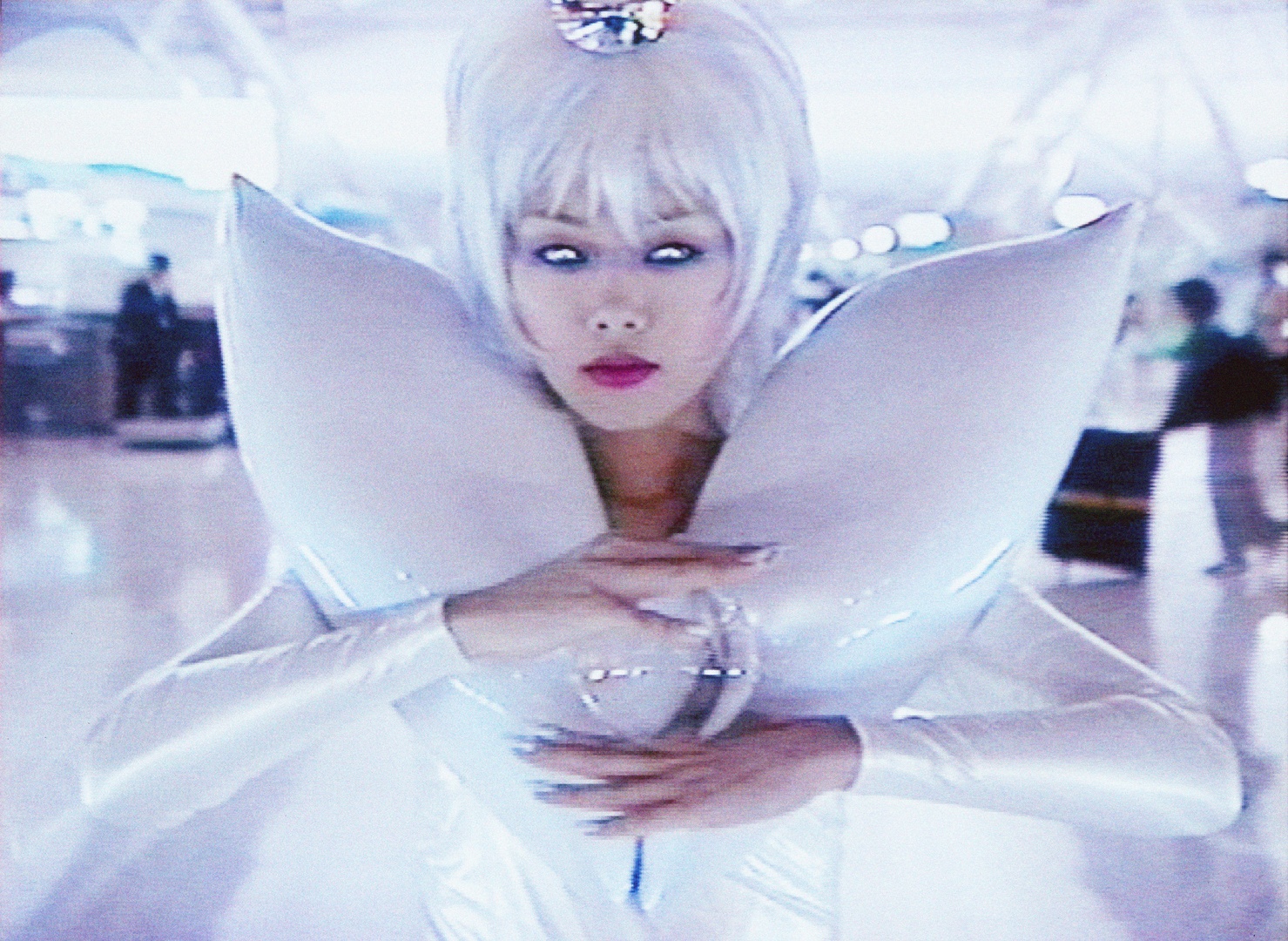Deep Focus
Futurized Worldview: Art as a Form of Soft Power
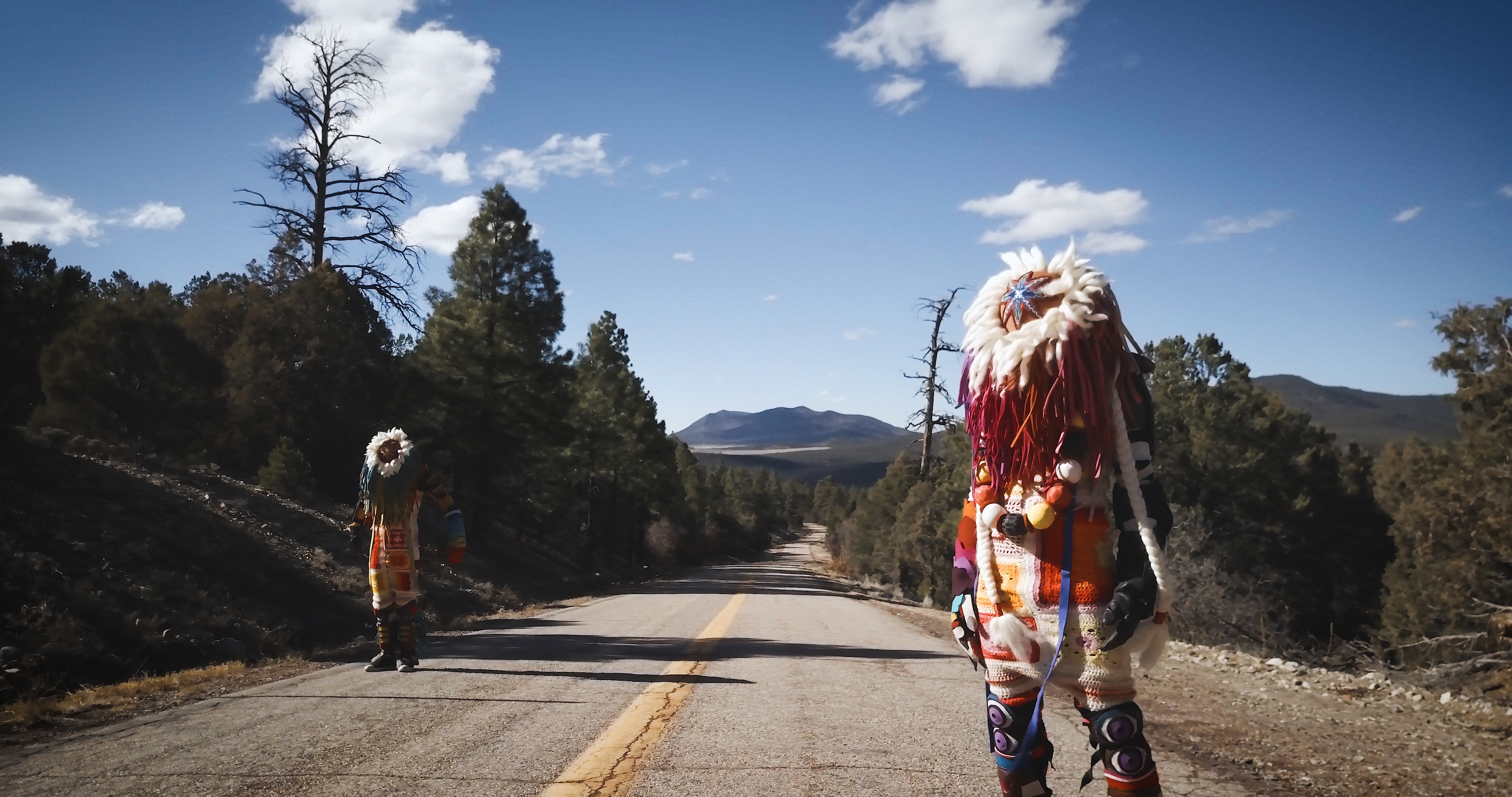
Cannupa Hanska Luger. Future Ancestral Technologies, araxooxi, 2018-2019. Performance and HD recording, TRT two minutes and fifty-six seconds. Image provided by the artist and Ford Foundation Gallery.
The challenge of the twenty-first century may be our collective acceptance of the coexistence of multiple points of view, an awareness of the fluidity of opinion, a loosening of the membrane of belief systems, and a movement toward the liminal space that artists inhabit. When this approach is paired with the leverage, resources, and visibility of democratic and just institutions, the conditions for revelatory cultural diplomacy can arise. In the context of contemporary art, depending on the actors involved—like artists, curators, arts administrators, trustee boards, and audiences—a slow yet steady engagement with an idea, a prompt, unfolds. A form of thought persuasion is tested, as the power of its cultural capital—lingering experiences, visual impressions, text-based language, and media coverage—permeates society at large.
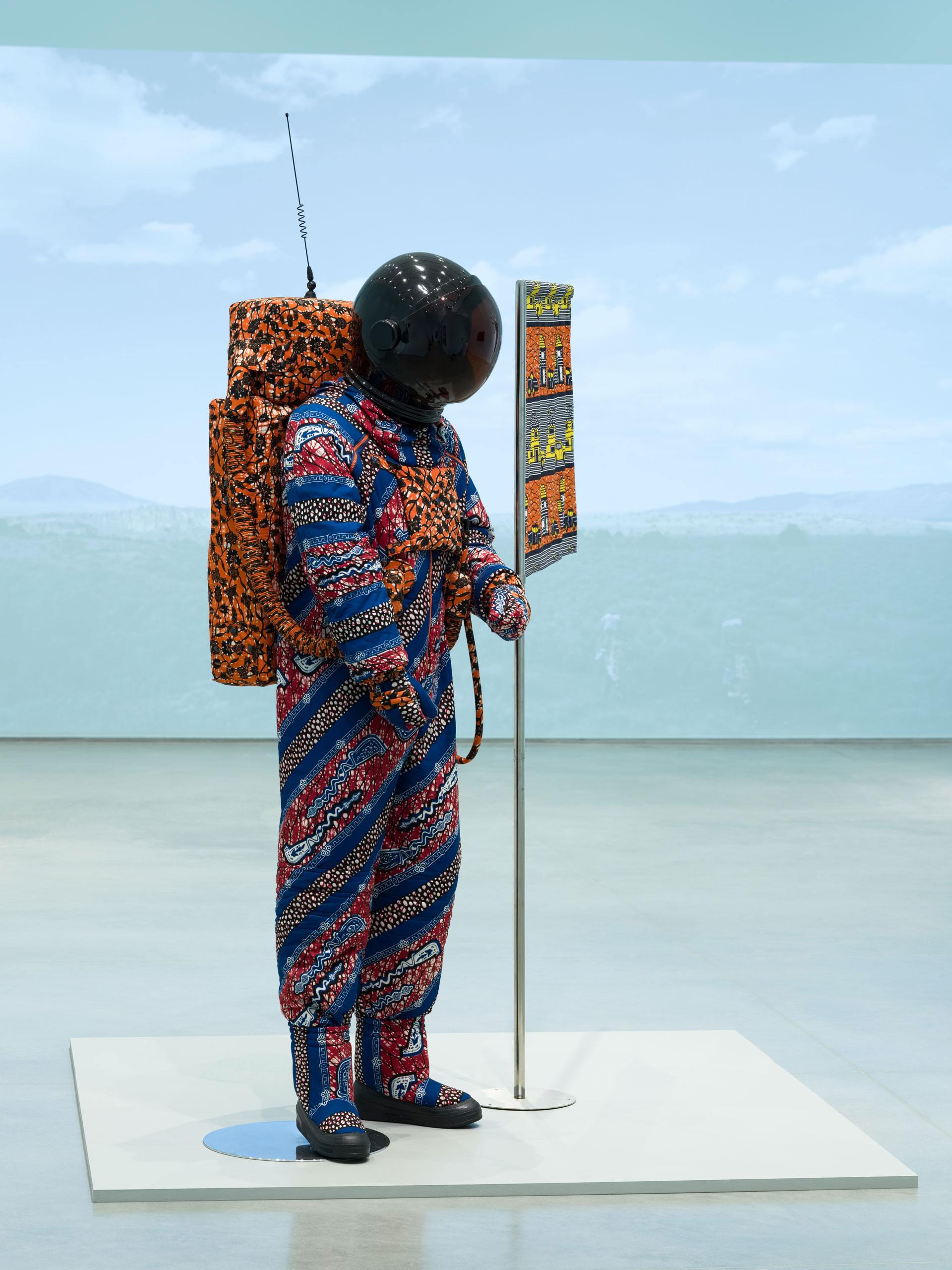
Yinka Shonibare CBE RA. Cloud 9, 2000. Installation view of the Utopian Imagination exhibition September 17 – December 7, 2019, at Ford Foundation Gallery, New York. Life-size fibreglass mannequin, Dutch wax printed cotton textile, flag. Image courtesy: Courtesy of the artist and Stephen Friedman Gallery, London. Photo: Sebastian Bach.
A sophisticated privileging of diversity as a tool for a visceral and cerebral process of raising consciousness demonstrates the reach of culture, at the intersection of art and social justice, as a form of soft power. For the inaugural year of the Ford Foundation’s gallery, three exhibitions conceptualized by the curator and artist Jaishri Abichandani exemplified the extent of this reach. Renowned artists such as Yinka Shonibare CBE RA and Mariko Mori were paired with the next generation of forward-thinking artists, including Margarita Cabrera and Cannupa Hanska Luger, among many others. The power of the group-show format with institutional backing was astutely invoked to reframe larger socio-political issues; powerful ideas from emerging artists were juxtaposed against those of established artists, linking ongoing struggles for human rights. Personified in a futurized context—a spacesuit—the presence of Shonibare’s Cloud 9 (1999–2000) echoed the enduring visual impact of the artist’s presentations of African textiles tricked out in Victorian-era fashion styles that for decades have challenged the cognitive dissonance at the heart of colonialism.
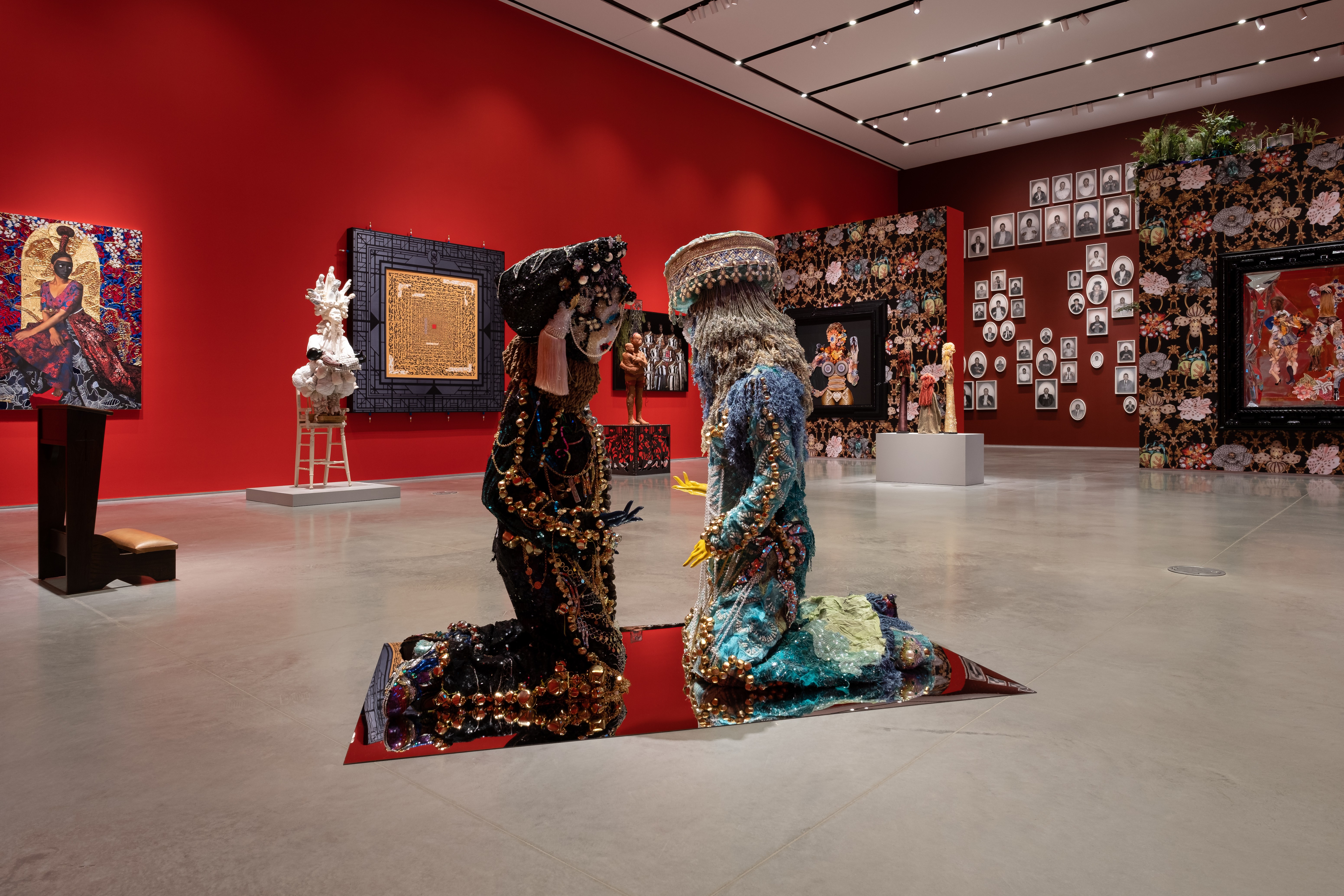
Installation View. Ford Foundation Gallery Radical Love. June 11 – August 17 2019. Photo: Sebastian Bach.
The first exhibition in the trilogy, Perilous Bodies, explored issues of violence, racism, and inequality across the globe. The second, Radical Love, offered works grounded in antidotes to these problems: devotion, abundance, and beauty. And the third exhibition, Utopian Imagination, gathered a collection of works to coalesce into an inclusive, futurized worldview, one in which planet Earth is governed by a drastically different value set. For example, a featured video work, Future Ancestral Technologies, araxooxi (2018–19) by the emerging artist Hanska, invokes ancestral wisdom as a progressive remedy for environmental and gender-based issues. Ultimately, the sublime residue of this collaborative, artistic achievement will continue its passage, filtering into evolving conversations on social justice that shift narratives and shape policy.
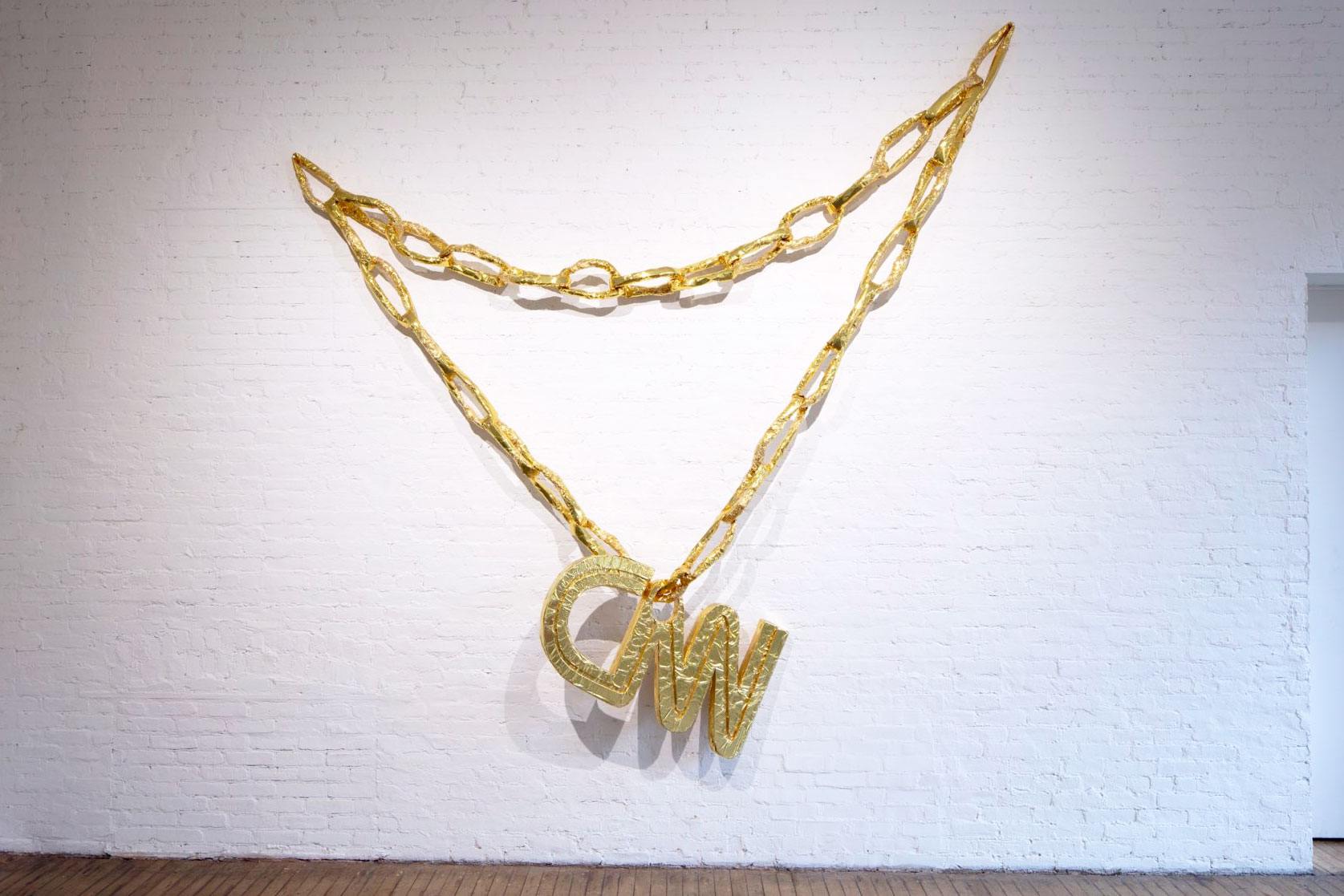
Thomas Hirschhorn. Necklace CNN, 2002. Installation view, Theater of Operations: The Gulf Wars 1991–2011, MoMA PS1, November 3, 2019–March 1, 2020. Photo: Matthew Septimus.
The scale of a group exhibition can also allude to the monumentality of the subject matter. The ongoing cultural impact of war, examined in the exhibition Theater of Operations: The Gulf Wars 1991–2011, on view from late 2019 through spring 2020 at MoMA PS1, includes work by eighty-two artists, including Himat M. Ali, Jenny Holzer, Thomas Hirschorn, Hiwa K, Susan Meiselas, and Jamal Penjweny. Exhibited across all four floors of the institution, the multiple points of view—from artists based in Iraq, Iraqi artists living outside the country, Arab artists, and artists coming from a Western perspective—destabilize any notion of hegemonic truth, offering thoughtful critiques of the United States-led military engagement and its fallout in the region. An installation of twenty Polaroid photographs by the artist Tarek Al-Ghoussein complicates any notion of a singular, nativist perspective. Born in Kuwait to exiled Palestinian parents, Al-Ghoussein shot the photographs—of television newscasts on the Iraqi invasion of Kuwait and the subsequent Gulf War—while in Cairo.

Himat M. Ali. Al Mutanabbi Street Baghdad, 2007. Mixed media on paper; 12 bound books in wooden slipcase; each 13 3/8 × 9 13/16 inches (34 × 25 cm). Courtesy the artist and Azzawi Collection, London. Photo: Anthony Dawton.
The art institution as a container and collaborator—with spaces of ambiguity and tension that are so often occupied by artists and their works—is once again in play. In this scenario, a disparate collective of visual voices harmonizes, if only for a moment, to present cracks in the veneer of objectivity, persuading a movement of thought toward the “how” and “when” of the deconstruction of the military-industrial complex and war profiteering.
When harnessed at the nexus of social justice, human rights, and institutional authority, the palpitating heart of artworks invested in craft, as well as a concern for humanity, drowns out the noise of the art market and instead asserts the potential force and value of art as a form of soft power.
Diana McClure is a photographer and writer based in New York City. She has written for a variety of publications including Art in America, Art Basel, the Brooklyn Rail, Cultured and Photograph among others. She is co-founder and co-editor of an experimental publishing press, Lazuli Literary Group, and an online/print journal, AZURE: A Journal of Literary Thought focused on otherworld realism.

